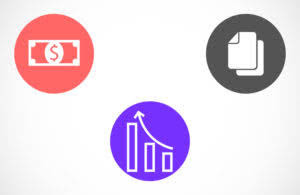New York Tax 2025: Guide to Income, Sales, Property, and Retirement Taxes

New York operates on a combined rate structure, meaning local counties and cities can impose their own taxes on top of the state rate. Apply the appropriate tax rates based on your filing status and income level. For example, a single filer with an adjusted income of $30,000 would pay 3.078% on the first $12,000, 3.762% on the next $13,000, and 3.819% on the remaining $5,000. Residents of New York City, defined as individuals who maintain a permanent residence in the city and spend 184 or more days there during the tax year, are subject to the city’s personal income tax. This includes individuals with multiple residences who meet residency criteria within city limits.
- The mechanism of FICA taxation involves a dual contribution system where both the employer and the employee contribute a set percentage of the employee’s income towards these programs.
- The New York City income tax is due on April 15th, when you file your federal and state tax returns.
- New York also offers a $1,000 exemption for each of a taxpayer’s qualified dependents.
- Yes, Mayor Eric Adams has proposed tax relief for low-wage earners, potentially eliminating city income taxes for over 580,000 residents.
- If you need to download New York local sales tax rates, visit the New York sales tax database download page.
New York Property Taxes By County
As a refundable credit, the EITC not only reduces the amount of tax owed but can also result in a refund if the credit exceeds the taxpayer’s total tax liability. This makes the EITC a powerful tool for reducing poverty, incentivizing work, and providing financial support to those who need it most. The credit amount varies based on the taxpayer’s income, marital status, and number of qualifying children, with the intention of providing greater assistance tax rate new york to families with children. When calculating your New York income tax, keep in mind that the New York state income tax brackets are only applied to your adjusted gross income (AGI) after you have made any qualifying deductions. This knowledge can empower you to take advantage of tax deductions and credits, ultimately reducing your tax liability. As we dive deeper, we’ll explore how these rates are structured and provide strategies to help you minimize your tax burden while maximizing your financial health.
![]()
Capital Gains Tax in New York: What You Need to Know for 2025

Growing cigarette tax levels and differentials have made cigarette smuggling both a national problem and a lucrative criminal enterprise. As the market share of electric vehicles (EVs) on the road grows, the gas tax’s ability to fund road projects and decrease traffic congestion erodes. This proactive approach ensures that you are not caught off guard by a large tax bill at the end of the year. These digital tools are designed to navigate the complexities of tax calculations, saving you both time Oil And Gas Accounting and potential errors.
New York Single Filer Standard Deduction
For the complete list of New York state’s tax credits, visit the New York Department of Taxation and Finance website. Below is a breakdown of some of the deductions and credits you could potentially qualify for as a tax filer in New York state. While these guidelines apply to most residents, specific exemptions may affect whether you need to file. TurboTax can help you navigate these rules and determine if any exceptions apply to your unique situation, ensuring you meet all filing requirements.
- Capital gains are taxed as ordinary income, with state rates ranging from 4% to 10.9%, plus applicable local taxes.
- New York City residents must navigate both the federal and state income tax systems.
- The state sales tax rate is 4%, but New Yorkers pay a higher rate since localities can add as much as 4.53%.
- In most states, necessities such as groceries, clothes, and drugs are exempted from the sales tax or charged at a lower sales tax rate.
- As a result, the total New York sales tax you pay depends on the location of the purchase—and the differences can be significant.
- Programs like the state’s School Tax Relief (STAR) indirectly benefit city residents by reducing their property tax burden.
Any query? Just fill the form

If your business is structured as an S-corporation or Limited Liability Company (LLC), the tax rules can be different. For corporations without taxable income, NYC applies a tax based on capital or fixed-dollar minimums. The capital-based tax is 0.15% of a corporation’s business capital, capped at $5 million. The fixed-dollar minimum tax ranges from $25 to $200,000, depending on receipts. Businesses with receipts under $100,000 pay the lowest amount, while those exceeding $1 billion pay the highest. Both are taxed as ordinary income at the state level, unlike the federal system, which provides preferential rates for long-term gains.
Rhode Island State Income Tax in 2025: A Guide
- Understanding New York City’s income tax rates is crucial for residents and workers alike.
- Rates start at 3.078% for income up to $21,600, 3.762% for $21,601–$45,000, 3.819% for $45,001–$90,000, and 3.876% for income exceeding $90,000.
- Yes, New York City residents can take advantage of renewable energy tax credits, which offer tax savings for investments in solar, wind, and other clean energy projects.
- There are three types of residency statuses when it comes to New York state tax.
- The state’s tax rates range from 4 percent to 10.9 percent for income earned in 2024 and reported on tax returns filed in 2025.
- Like the personal income tax the federal business tax is bracketed based on income level, with eight corporate tax brackets.
In this article, we break down the NYC income tax brackets for different filing statuses, explain available tax credits, and discuss some ways to reduce or avoid paying the city income tax. https://2021.scsaddis.com/2023/02/07/how-much-does-a-cpa-cost-average-cpa-fees/ We also cover other important considerations, like how selling property or renting it out can affect your taxes. If you’re looking for ways to manage or lower your NYC income taxes, this guide has got you covered.
New York has a standard deduction — you can claim the standard deduction or itemize your deductions. New York also offers a $1,000 exemption for each of a taxpayer’s qualified dependents. New York state has a graduated, or progressive, individual income tax system that taxes lower-income taxpayers at a lower rate, while the highest-income taxpayers pay the most tax. Estimated payments are particularly important for those with irregular income, such as freelancers or business owners.
What Are the Income Tax Deductions in New York?
For your 2024 taxes (which you’ll file in early 2025), only individuals making more than $25,000,000 pay the top rate, and earners in the next bracket pay 0.6% less. Joint filers face the same rates, with brackets approximately double those of single filers. For example, the upper limit of the first bracket goes up from $8,500 to to $17,150 if you’re married and filing jointly. His total taxable income is $500,000 annually, which places him in the top federal and state income tax brackets.


And you can reach Manhattan in as little as thirty minutes from cities like Hoboken, Jersey City, or the many suburban towns in NJ. You’re close enough to the city to visit and work, but reap the benefits of cheaper housing, more space, and the avoidance of that pesky personal income tax. If you want to save on your tax bill, you can also explore many great commuter towns in Connecticut and Long Island. This guide explains who needs to pay NYC taxes, how rates vary by income level, and how to calculate your tax liability.

Leave a Reply